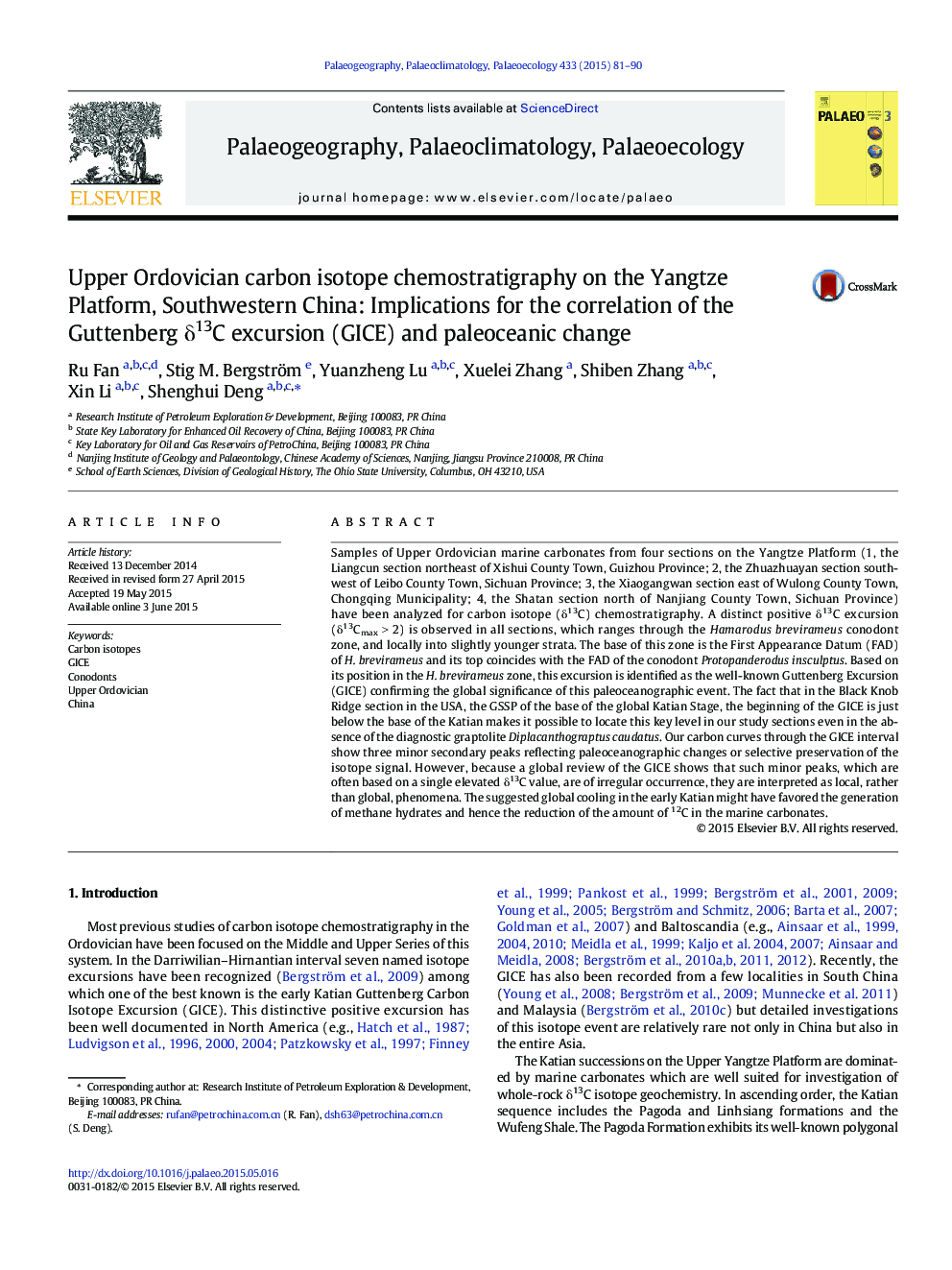| کد مقاله | کد نشریه | سال انتشار | مقاله انگلیسی | نسخه تمام متن |
|---|---|---|---|---|
| 4465920 | 1622157 | 2015 | 10 صفحه PDF | دانلود رایگان |

• The Guttenberg Excursion (GICE) is observed in sections on the Yangtze Platform.
• The GICE herein ranges through the Hamarodus brevirameus Conodont Biozone.
• The global significance of this paleoceanographic event (i.e., GICE) is confirmed.
• The base of the Katian Stage is located herein in the absence of D. caudatus.
Samples of Upper Ordovician marine carbonates from four sections on the Yangtze Platform (1, the Liangcun section northeast of Xishui County Town, Guizhou Province; 2, the Zhuazhuayan section southwest of Leibo County Town, Sichuan Province; 3, the Xiaogangwan section east of Wulong County Town, Chongqing Municipality; 4, the Shatan section north of Nanjiang County Town, Sichuan Province) have been analyzed for carbon isotope (δ13C) chemostratigraphy. A distinct positive δ13C excursion (δ13Cmax > 2) is observed in all sections, which ranges through the Hamarodus brevirameus conodont zone, and locally into slightly younger strata. The base of this zone is the First Appearance Datum (FAD) of H. brevirameus and its top coincides with the FAD of the conodont Protopanderodus insculptus. Based on its position in the H. brevirameus zone, this excursion is identified as the well-known Guttenberg Excursion (GICE) confirming the global significance of this paleoceanographic event. The fact that in the Black Knob Ridge section in the USA, the GSSP of the base of the global Katian Stage, the beginning of the GICE is just below the base of the Katian makes it possible to locate this key level in our study sections even in the absence of the diagnostic graptolite Diplacanthograptus caudatus. Our carbon curves through the GICE interval show three minor secondary peaks reflecting paleoceanographic changes or selective preservation of the isotope signal. However, because a global review of the GICE shows that such minor peaks, which are often based on a single elevated δ13C value, are of irregular occurrence, they are interpreted as local, rather than global, phenomena. The suggested global cooling in the early Katian might have favored the generation of methane hydrates and hence the reduction of the amount of 12C in the marine carbonates.
Journal: Palaeogeography, Palaeoclimatology, Palaeoecology - Volume 433, 1 September 2015, Pages 81–90